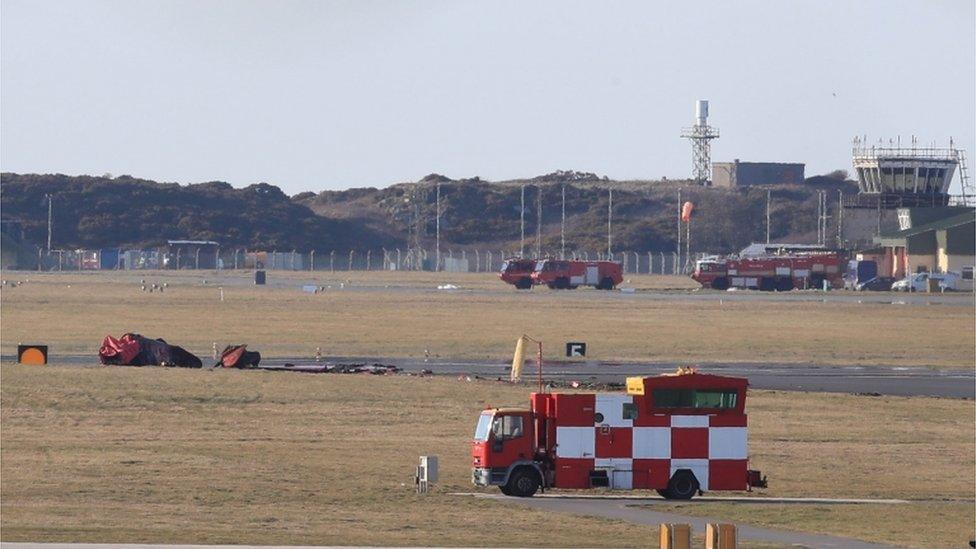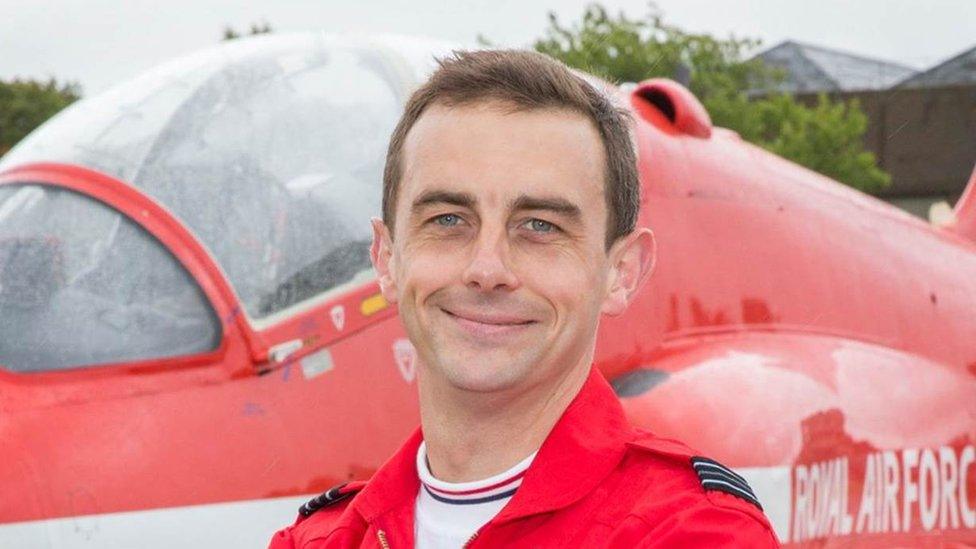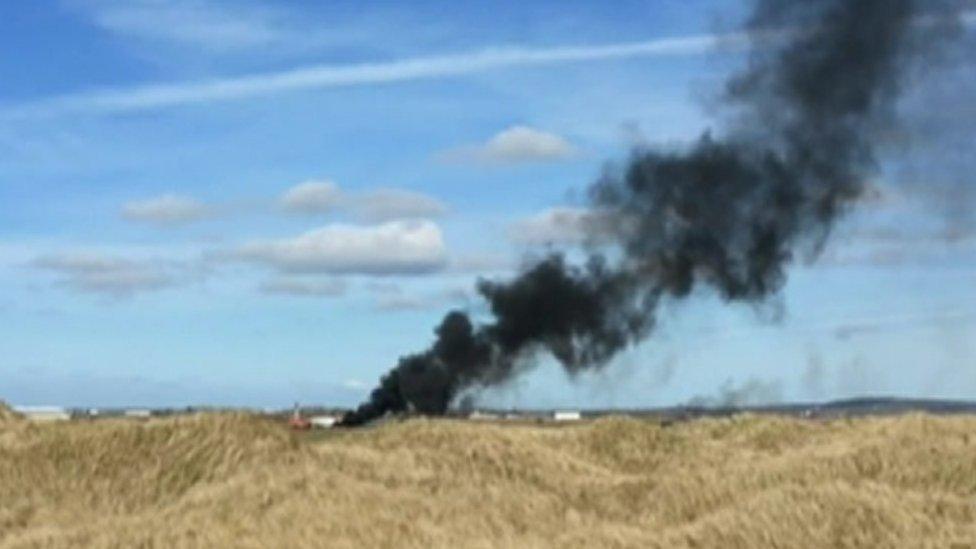Red Arrows jet at RAF Valley crashed seconds after take off
- Published

Cpl Jonathan Bayliss joined the Red Arrows team in January 2016
A Red Arrows pilot ejected from a plane just before it crashed and burst into a "ball of flames", killing an engineer colleague, an inquest heard.
Cpl Jonathan Bayliss, 41, from Ingham, Lincolnshire, was an engineer in the Hawk 1 jet which crashed on the RAF Valley runway on Anglesey.
Pilot Flt Lt David Stark was carrying out a practised engine failure on take-off on 20 March 2018 at the time.
The inquest heard the pilot ejected safely.
"Sadly, Cpl Bayliss did not," said Katie Sutherland, acting senior coroner for north west Wales, as she opened the hearing.
Shortly after taking off, the practised manoeuvre had gone wrong.
The coroner said after reviewing the evidence, she "won't just consider how, but how and in what circumstances" the death happened.
The inquest heard Cpl Bayliss, who was born in Dartford in Kent, died from smoke inhalation and a low grade head injury.
In 2019, a Service Inquiry Panel (SIP) investigation found that the pilot was almost certainly fatigued and distracted during the incident.
'Significant'
Sqn Ldr Steve Morris, who was an instructor at RAF Valley at time, and a former member of the Red Arrows team, was on the runway about to take off with a student when he saw the jet piloted by Fl Lieut Stark take off ahead of him before going down.
"The rate of descent was significant. It caught my attention," he told the inquest, adding the crash happened about 12 to 15 seconds later.
He said he saw the canopy of the jet shatter and the pilot ejecting just a fraction of a second before seeing the aircraft explode in a ball of flames.

The Red Arrow's display team jet crashed at RAF Valley on Anglesey in March 2018
Sqn Ldr Morris told the hearing the best engineers were chosen to accompany pilots on certain sorties.
He added pilots had to regularly perform certain manoeuvres, such as a practised engine failure on take-off, and such manoeuvres had to be cleared before flights.
He also said the sortie in which Cpl Bayliss died would not happen any more.
The coroner asked Sqn Ldr Morris what training Cpl Bayliss and other non-pilots would have received in how to operate the ejector seat in the jet.
He said he could not talk about what the practice was in 2018 but now anyone flying in a jet would be taken to a hangar, put in practice seat, shown how to strap themselves in "and then you show them how to pull the handle".
He said once in the air, the pilot could not operate the ejector seat for the other person.
'Intense' pressure
Charlotte Law, representing Fl Lieut Stark, asked whether the volume and tempo of work for new members of the Red Arrows was intense, to which Sqn Ldr Morris replied: "The pressure you put yourself under can be intense."
"Particularly during the spring months when you start to develop the formations... There will probably be moments when you question your own ability to do the job.
"It's a job you go into whole-heartedly and with 100% commitment," he added.
He also said that members of the Red Arrows have a range of other duties, including dealing with the press and members of the public.
"It's all part of being part of the Red Arrows," he said.
Sqn Ldr Morris confirmed he had instructed Flt Lt Stark before he joined the Red Arrows in 2017 and, when asked if he had any concerns about his abilities as a pilot, said: "Not any at all."
He said there was no way for the pilot, in the front seat of the plane, to eject the rear seat passenger.
The hearing, which is expected to last up to four days, is continuing.

Flt Lt David Stark was able to eject from the plane and survived the crash
Related topics
- Published14 May 2021

- Published10 October 2019

- Published20 March 2018

- Published19 June 2018

- Published23 March 2018
